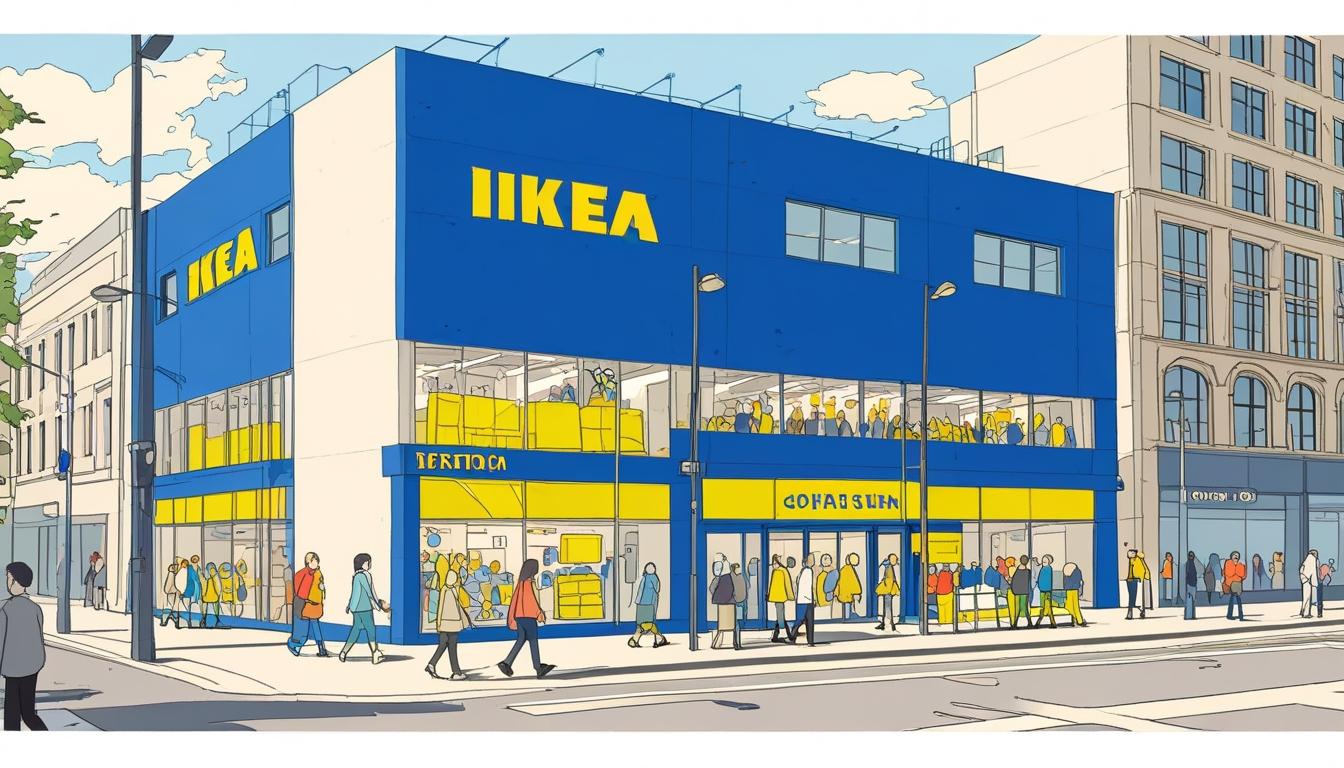Ikea has opened a new store at Oxford Circus, a location historically significant in London's furniture retail landscape, previously occupied by the Peter Robinson department store and, more recently, Topshop. The launch, celebrated by Mayor Sadiq Khan, marks a notable moment in the revival of a street that has faced decline over the years.
The store presents a sharply contrasting vision to the grand department stores that once dominated the area, such as Maple & Co and Liberty, known for their opulent displays and quality craftsmanship. In stark contrast, the Ikea outlet showcases a mostly subterranean space laden with an array of inexpensive merchandise, catering to a consumer culture focused on quantity and affordability rather than luxury. The opening day was lively, featuring music from a DJ and staff distributing free blue bags, a bold statement of Ikea's vibrant retail ethos.
As the familiar blue and yellow branding of the retailer arrived on one of London’s key shopping streets, the physical transformation of the area raised questions about the implications for urban retail environments. This store, while drawing significant foot traffic, is characterised by its lack of engagement with the public realm. Much of the shopfront is obscured by large advertisements, and the interior resembles a labyrinthine space devoid of windows, reminiscent of duty-free zones at airports.
Historically, Oxford Street was renowned for its ability to adapt to evolving consumer tastes and aspirations. The current Ikea model seemingly shifts this paradigm to emphasise an accessible, modern lifestyle, often framed within the constraints of city living. Young customers were seen filling their bags with low-cost items like 75p plates, suggesting a shift in consumer behavior and aspirations compared to previous generations.
Ikea’s earlier success in the UK stemmed from its appeal to those wishing to distance themselves from traditional, often ornate furnishings associated with their parents’ homes. The retailer capitalised on creating inviting room settings that allowed consumers to envision modern living spaces furnished with stylish, coordinated pieces. Yet, the experience of actual home life often diverged sharply from this ideal, and the self-assembly model introduced by Ikea has sometimes led to frustration.
Current trends reflect a change in young people's desires; many appear less interested in completely overthrowing the past aesthetic and are instead embracing eclectic styles and vintage furniture. There’s a growing appreciation for what has been termed "cottagecore," embodying a more cluttered and cosy domesticity, alongside a revival of mid-century modern designs celebrated for their quality.
The introduction of Ikea’s retail format in Oxford Street prompts contemplation about consumer culture and sustainable practices within the design industry. Despite the brand's claims of environmental consciousness, the presentation of cheap, mass-produced goods raises concerns about overconsumption. This juxtaposition of an egalitarian approach to design and the perception of fast fashion within the interiors market presents a complex narrative about the future of urban retail in a landscape that blends nostalgia with contemporary consumer demands.
Source: Noah Wire Services
